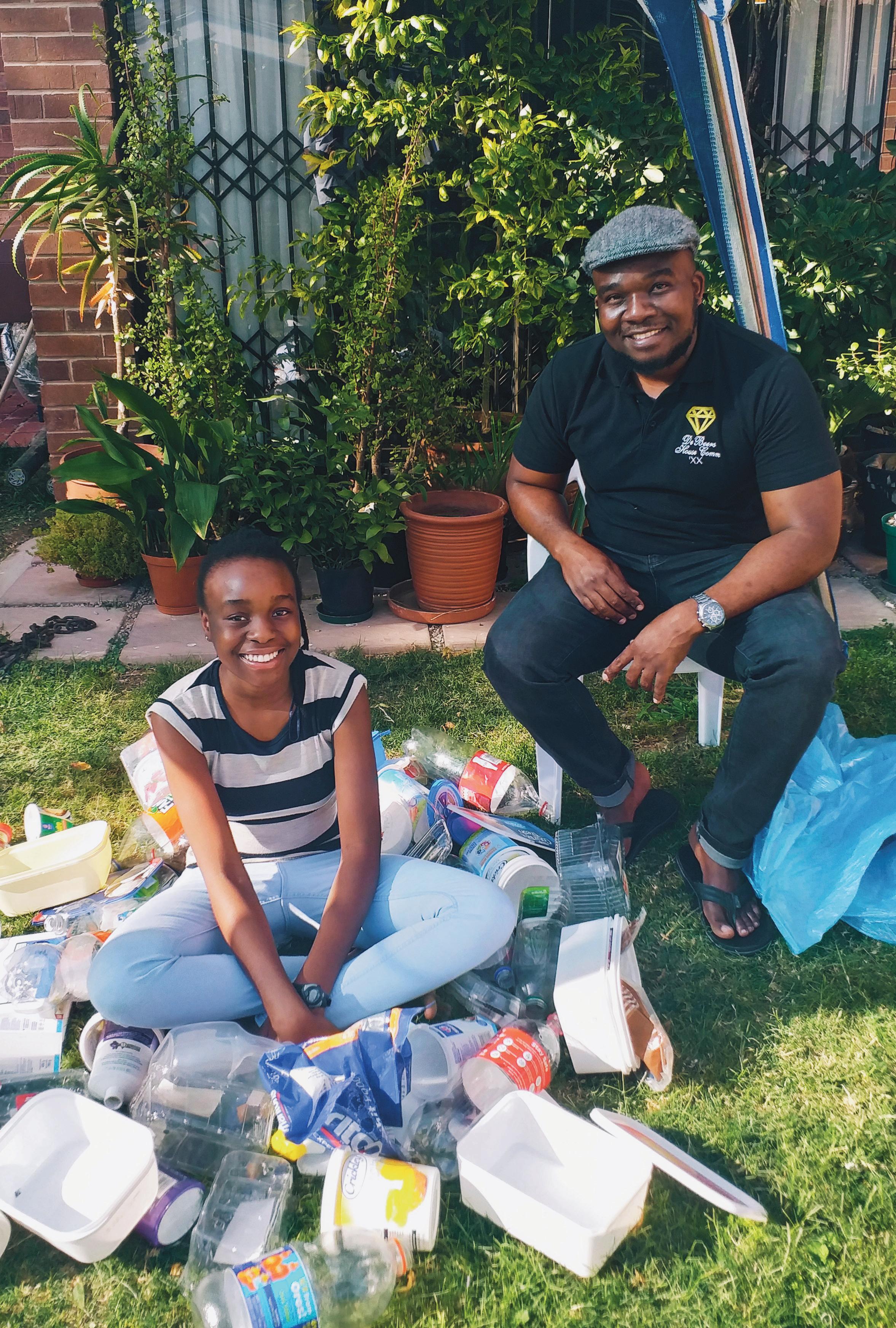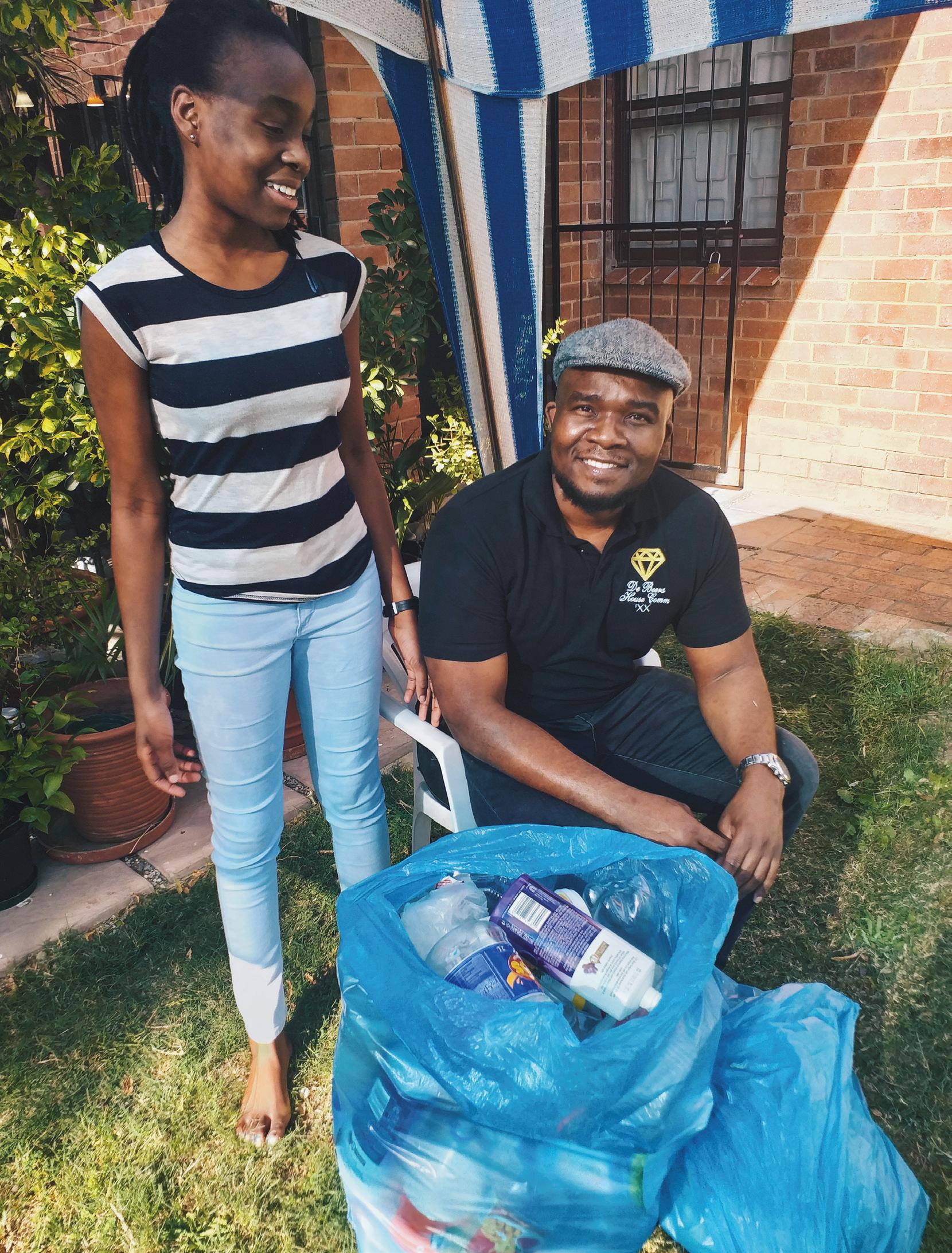
4 minute read
IT STARTS AT HOME words by Gladman Thondhlana
Home-based experiment for changing plastic waste disposal behaviour
Plastic-based packaging remains a huge and important part in the distribution of goods and services worldwide. Furthermore, plastic waste is a significant global problem and presents an unprecedented challenge to solid waste management. The social and environmental costs of plastic waste are substantial and can be seen in visual pollution, death of marine life, blockage of drainage systems and outbreaks of disease. The benefits of minimizing plastic consumption and proper plastic waste disposal mechanisms are quite obvious but the main challenge today is translating these ideas into practice. In response to this, efforts have been rallied on understanding human behaviour as a basis for designing solid waste management interventions. In many cases, local city authorities have a mandate and are expected by residents to provide solutions in regards to the collection of waste in general and proper solid waste disposal. What happens at the disposal site (landfills) is unknown to many. Yet, understanding plastic waste disposal behaviour at the household is important because this is where the solid waste management chain starts.
Advertisement
Various theories are used as lenses for understanding and predicting behaviour, including the Theory of Planned Behaviour (TPB). We won’t go into details but basically, the TPB argues that behaviour is directly influenced by intentions, which in turn are predicted by attitudes, subjective norms, and perceived behavioural control (Ajzen, 1991). Our interest here is on attitudes. Attitudes simply refer to a general measure of the favourability of a particular behaviour (e.g. plastic waste separation) for the individual. The intentions to engage in a specific behaviour can be increased when individuals exhibit a positive attitude to the said behaviour. But people may not act environmentally despite the intention to do so, if they are constrained, say through unavailability of support infrastructure (e.g. recycling bins). I am aware this is a simplistic way of looking at behaviour because behaviour is a complex phenomenon. People can behave differently to the same intervention or thing. For example, some people wear masks while others don’t, despite recommendations to do so during COVID-19 by health experts.
My plastic waste disposal context
I live in a setting where there are no facilities to separate waste. Ordinarily, the practice is to put all waste (plastic, paper, glass, tins, food you name it) in one bin. This bin is then transported to the municipal disposal site. I have visited the landfill site several times and all waste is disposed of there. I have seen building rubble, plastic, vegetables, paper, metal – the list is endless, at the landfill. What one cannot miss is the plastic flying all over the landfill and the random clouds of smoke from fires time and again. Without a waste separation facility, the easy thing to do is to not separate waste. Further, without any waste separation.
My 12-year-old daughter and I have had conversations about the adverse impacts of plastic. I think her and her classmates learnt at school about sharks being entangled in plastic but she kind of struggled to put this into perspective beyond sharks. As you can imagine, the COVID-19 lockdown has afforded me plenty of quality time with my daughter, and these conversations reached ‘boiling point’.

The results and visual impression of the plastic waste we generated are PHENOMENAL and SCARY! Our household produced a fully-packed plastic bin and a half of plastic waste. My daughter and I started talking about how much plastic a family of five, could produce in a year. We started talking about the potential impact of plastic if families in our neighbourhood produced more or less the same amount of plastic waste and disposed of it in an environmental-unfriendly manner. We then went on to talk about what the impacts would look like if all the residents of Makhanda, at the provincial and national level behaved in the same way?
The impact of the visual impression of plastic waste generation, in our view, began to change our attitudes towards plastic waste disposal, even though we know our efforts may not yield significant changes given all the waste will find its way to the landfill. The message from our home-based experiment is not shrouded in academic jargon rather it is simple and straightforward. First, there is value in involvement, consistent with the Chinese Proverb “Tell me, I forget. Show me, I remember. Involve me, I understand”. Our involvement in cleaning up and separating plastic waste has conditioned us into thinking about the potential impact of plastic waste disposal and in turn, the need to separate it in our home. Second, a clean and safe environment begins with us, not the municipality or government. We cannot entrust the future of our children in someone else’s hands. I do my part, you do your part – and the world is a better place for us and future generations.
In conclusion, we think pathways to addressing many environmental problems such as plastic pollution lies, partly, in cultivating positive attitudes, which can in turn, develop individuals’ agency (intentional actions). Our smallscale home-based experiment, highlights the power of experience and observations in raising our (and potentially other people’s) appreciation of the magnitude of the plastic pollution problem, and in turn, engendering positive attitudes towards the environment.
Photos: By Mazvita M. Thondhlana

